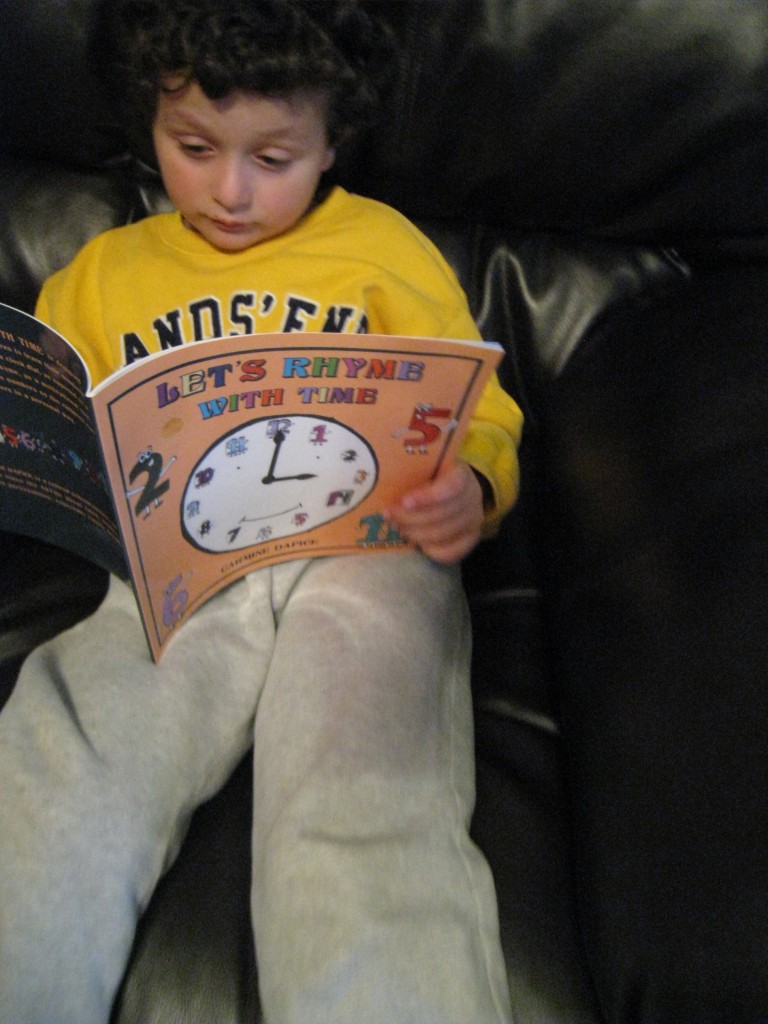Disclosure: In any review for a product or service, products or compensation may have been provided to me to help facilitate my review. All opinions are my own and honest. I am disclosing this in accordance with FTC Guidelines. Please see “Disclose” and "Terms of Use" tabs for more information.
Has your child ever asked you what time it was when there was a large clock hanging nearby? Author Carmine Dapice believes that children are losing the ability to tell time on round clocks rather than digital. A retired schoolteacher, Dapice wrote “Let’s Rhyme With Time” designed to teach children in school, at home or independently.
Dapice has created a book and included workbook with pages that contain catchy rhymes and illustrations synonymous with the Letter People – things children are already using in kindergarten. So Carmine, do you have time for a little chat?
Samantha- What inspired you to write the book?
Carmine Dapice- The writing of this long poem came by way of inspiration to write down my thoughts in poetic form, which I had already been doing for several years. It was later that the realization came to me that many kids were unable to tell time on regular, round clocks and it proved to be a problem for many since their orientation was toward digital clocks. The lively animated numbers and poetic form – hopefully – would attract their interest to numbered clocks that are still found in many areas of life.
S- Why do you feel children are losing this skill?
CD- Simply, ask several children in the age bracket of 5 years and up – even in later years to give the time from an analog numbered clock and you might be shocked with some of the results. My granddaughter was asked to give the time and even though an analog clock was present in that room, she had to walk into the next room to give the time from a digital clock. Now if that isn’t a strong motivation that a learning tool for analog clocks is necessary, what else would be! At the time, she was ten years old. It was sort of shocking to me.
S- Do you feel reading time from an analog clock is still a skill to have, what with watches fast going the way of the horse and buggy, and more and more people using digital clocks and cell phones to tell time?
CD- We cannot do away with familiarizing our youngsters with the now existing analog clocks until they are completely extinct, if that ever does come to pass.
S- What is the ideal age for kids to learn time telling skills?
CD- Preschoolers should be learning numbers in a highly motivational way. Kindergartners and first graders would be added to the list as well to begin learning to tell time specifically on round clocks. Incidentally, while dropping a sample book at a local middle school, the secretary at the desk indicated that many kids were unable to tell time from the wall analog clock. Again, I was very, very surprised! Children entering school are expected to know their ABCs, 123s and home address and contact information for their parents! Why would telling time be considered unnecessary?
S- How do you feel your book, “Let’s Rhyme With Time” Will help kids grasp the subject?
CD- The poetic style is catchy that is common in children’s books and lively numbers will catch their attention. I found the numbers to be very similar to Letter People that most kindergarten classes still utilize. Combined with Sesame Street and the learning styles children already use in class, these lively numbers seemed very much to fit the bill. My book plays to children’s interests for teaching.
S- Why rhyming? How do you feel that will help kids learn how to tell time?
CD- Rhyming is catchy and motivational. It is not common to them in most learning atmospheres. Of course, bedtime stories are usually fun but also rhyme. Pair the fun kids love with bedtime stories with a topic that nurtures their minds and… voila! The meter will capture their interest based on what they already love to read and listen to at bedtime.
S- Do you recommend the book for home or classroom use?
CD- I definitely recommend the book for classrooms, not just homes. Because of the work pages I’ve placed in the book and my expertise as a former teacher, I believe this book will fit easily into their curriculum.
S- Where can people buy this book, if interested?
CD- Books can be purchased from Amazon.com, WestBow Press (a division of Thomas Nelson) and Barnesandnoble.com.
Thanks for your time, Carmine!


















Speak Your Mind